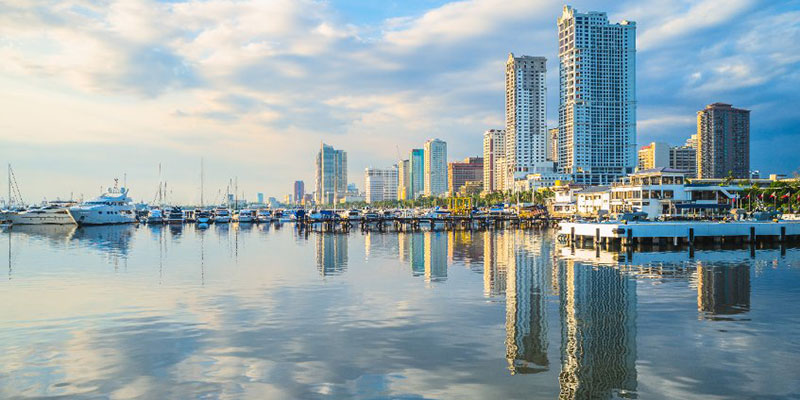Enforcing an earlier order of the Philippine Supreme Court to clean up Manila Bay, President Duterte threatened to shut down establishments, especially hotels, that discharge sewage into the bay.
As a result of complaints, Philippine government loosens guidelines, but they remain relatively strict
The Philippines recently relaxed its water-quality and effluent standards in response to feedback from the country’s business community that the former standards were too challenging.
In 2021, the Department of Environment and Natural Resources (DENR) published administrative order No. 2021-19, “Updated Water Quality Guidelines and General Effluent Standards for Selected Parameters.”
The order amended some of DENR AO No. 2016-08, a basic legal framework for Philippine wastewater management. The six relaxed effluent parameters were:
- Ammonia (as NH₃-N)
- Boron
- Copper (as dissolved copper)
- Fecal coliform
- Phosphate and phosphorus (total/reactive)
- Sulfate
While the order does loosen some standards, the business community isn’t necessarily breathing a sigh of relief. Not all of the new standards are easily met. Notably, the maximum ammonia value allowed in effluent remains on the low end (4mg/L) compared to most countries.
The Philippine government has shown little hesitation to engage in large-scale water pollution cleanups that can be hard on businesses. For example, a sewage cleanup of tourist destination Boracay island in 2018 completely closed down the tourism industry there for six months. Soon after, President Duterte announced a cleanup and rehabilitation of Manila Bay ordered years earlier by the Supreme Court, threatening to shut down establishments, especially hotels, that discharge sewage into the bay.
Nutrient Removal
Ammonia as NH₃-N is the nitrogen content of ammonia, and it is measured to determine nitrogen levels in the wastewater treatment process. Fluence offers a number of denitrification solutions that can help Philippine establishments meet tight nutrient discharge standards. For example, the membrane aerated biofilm reactor (MABR) technology used in Fluence products achieves exceptionally high nitrogen removal rates. Their spirally wound membrane configuration allows for passive aeration, greatly reducing the aeration costs compared to traditional biological treatment processes.
Fluence’s MABR treatment produces a high-quality effluent that exceeds China Class 1A and California Title 22 standards for water reuse. Nonpotable applications include golf course and landscape irrigation, toilet flushing, pavement and vehicle washing, and filling fountains and water features. It’s an effective way to keep water costs down, especially during dry seasons.
Fluence’s Aspiral™ MABR-based plants are packaged in standard shipping containers and have some special advantages for the Philippines. Their coated steel packaging has been proved against salt air and typhoon-force winds up to 150 mph.
Updating Existing Wastewater Treatment
For existing plants that don’t comply with the strict effluent standards, Fluence’s SUBRE MABR towers can be submerged in existing plants. SUBRE can be used to increase the effluent quality and capacity of a plant to bring plants into compliance without adding to the footprint.
SUBRE can also be used just as effectively in new-construction plants, like the one at the Port of Sihanoukville, Cambodia. MABR-based plants are now operating effectively at a number of locations in the Pacific Rim, including a large-scale decentralized project in central China.
Financing Options
In order to bring up-to-date infrastructure to areas where money for projects is short, Fluence’s Water Management Services offers BOO and BOOT performance-based contracts, which provide wastewater and water treatment to bring effluent into compliance with no upfront investment.
These contracts leverage the expertise of a specialized water company with more than 30 years of experience, offloading client risk, and shifting long-term operation and maintenance responsibilities to Fluence. Clients are free to forget about wastewater treatment and go back to doing what they do best.
Contact Fluence’s experts, who are waiting to help clients achieve compliance with tight nutrient standards in the Philippines and around the world.

